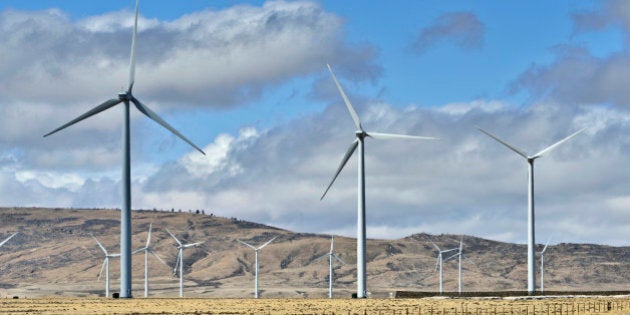
Today, U.S. Energy Secretary Ernest Moniz kicks off his first visit Canada. He's sitting down in Ottawa with his counterpart, the Minister of Natural Resources, to continue what our government describes as an "ongoing dialogue on Canada-U.S. energy cooperation."
It's a bit of a head-scratcher that it has taken the secretary this long to pop over to the neighbours, given the amount of trade between our nations and the degree to which we collaborate on shared interests such as energy security and infrastructure.
But then again, as of late the cross-border energy conversation has been getting a bit, well, awkward.
That's because the Secretary is likely coming our way in an effort to ramp up the bilateral Clean Energy Dialogue that the United States initiated upon President Obama's first visit to Canada back in 2009. The sector has since exploded south of the line; last year it attracted more than USD$200 billion in new investment. The solar market in particular has gone supernova, with U.S. generation expanding more than tenfold since 2008.
Moniz sees Canada as a promising export market for his country's clean-energy products and services -- and not just sleek Telsa sports cars, either. Earlier this year, a U.S. Department of Commerce trade analysis flagged Canada as the top export destination for American clean-energy entrepreneurs.
Ottawa should be eager to have the same conversation. According to clean technology consultants Analytica Advisors, Canada's 700-plus clean technology companies already represent an $11 billion industry, one that grew nine percent between 2011 and 2012. The sector's revenues could rival those of Canada's aerospace industry in the years ahead.
But here comes the awkward part: Our Natural Resources Minister says he intends to use the meeting to "highlight the benefits of the Keystone XL pipeline" for his U.S. guest. This despite the fact that, as the minister himself acknowledges, Keystone is not even the Energy Secretary's responsibility.
The White House is clearly in no hurry to approve that proposed project. Meanwhile, America's top diplomat, John Kerry, told the entire State Department that tackling climate change is his personal priority.
The secretary's visit offers Canada a perfect opportunity to shift the "dialogue" into clean energy action. To date, the U.S.-Canada dialogue has proven a useful forum to exchange technical knowledge. Very worthwhile, but why stop there?
For example, the minister and the secretary could agree to champion marquee new clean energy projects that span the border.
Manitoba Hydro's $4 billion agreement with Minnesota Power offers an inspiring example to emulate. The cross-border deal will allow Manitoba hydro power to back up Minnesota's wind turbines, offering a clean-energy solution to the midwest and export revenues to Manitobans.
Similarly, the two leaders could set joint targets for sales of electric vehicles, and commit to matched incentives to get there. On that score, Canada currently lags far behind. While Washington provides electric-vehicle rebates of up to $7,500, Ottawa currently offers nothing.
Governments have two broad approaches at their disposal to promote the clean-energy sector's growth. They can offer specific support through tax breaks for related technologies, trade promotion initiatives led by overseas embassies, and so on.
Even more important, they can create predictable demand for clean power -- an essential climate change solution -- by adopting strong rules to curb greenhouse gas pollution. That means choosing policies like clean power regulations, a price on carbon pollution, and meaningful carbon targets.
Canada could be doing far more of all of the above. But while Ottawa's climate regulatory agenda has stalled, leaders around the world are moving -- including our American neighbours, who are enacting sweeping new clean power regulations.
In that changing landscape, betting heavily on oil sands to carry our economic future is too big a risk. Instead, Ottawa needs a "Keystone XL"-sized effort to support our clean energy industry's huge potential.
ALSO ON HUFFPOST: